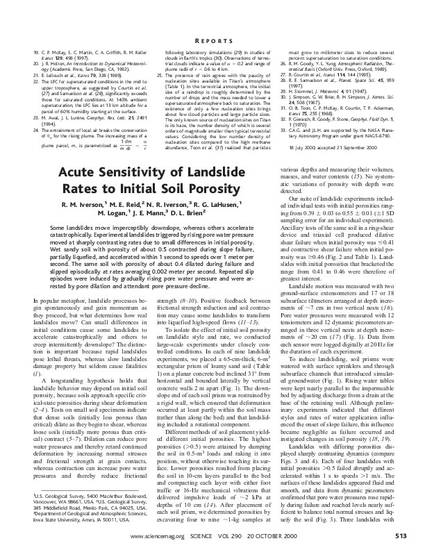
Article
Acute Sensitivity of Landslide Rates to Initial Soil Porosity
Science
Document Type
Article
Disciplines
Publication Version
Published Version
Publication Date
10-20-2000
DOI
10.1126/science.290.5491.513
Abstract
Some landslides move imperceptibly downslope, whereas others accelerate catastrophically. Experimental landslides triggered by rising pore water pressure moved at sharply contrasting rates due to small differences in initial porosity. Wet sandy soil with porosity of about 0.5 contracted during slope failure, partially liquefied, and accelerated within 1 second to speeds over 1 meter per second. The same soil with porosity of about 0.4 dilated during failure and slipped episodically at rates averaging 0.002 meter per second. Repeated slip episodes were induced by gradually rising pore water pressure and were arrested by pore dilation and attendant pore pressure decline.
Rights
Works produced by employees of the U.S. Government as part of their official duties are not copyrighted within the U.S. The content of this document is not copyrighted.
Language
en
File Format
application/pdf
Citation Information
Richard M. Iverson, M. E. Reid, Neal R. Iverson, R. G. LaHusen, et al.. "Acute Sensitivity of Landslide Rates to Initial Soil Porosity" Science Vol. 290 Iss. 5491 (2000) p. 513 - 516 Available at: http://works.bepress.com/neal-iverson/22/

This article is from Science 290 (2000): 513, doi:10.1126/science.290.5491.513.